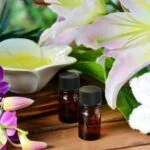Are you looking for the best aromatherapy for birth? Aromatherapy, the use of essential oils to promote physical and psychological well-being, has become increasingly popular among expectant mothers as a natural method to alleviate discomfort and enhance relaxation during labor and delivery. In this article, we will explore the benefits of using essential oils during childbirth and provide insights on how to use them effectively to create a calming and soothing atmosphere in the delivery room.
The process of labor and delivery can be both physically and emotionally demanding, leading many women to seek alternative methods for pain management and relaxation. Aromatherapy offers a natural approach that can complement traditional medical care, providing relief from pain, anxiety, and stress. By understanding the benefits of specific essential oils and how to use them safely, expectant mothers can incorporate aromatherapy into their birth plans as a supportive tool for their overall well-being.
In the following sections, we will delve into the top essential oils for labor, exploring their individual benefits and how they can be used effectively during childbirth. We will also discuss tips on creating a relaxing environment in the delivery room through aromatherapy, as well as important safety precautions to consider when using essential oils during labor.
Additionally, we will look at how partners can be involved in assisting with aromatherapy and share real-life experiences of women who have successfully utilized aromatherapy for birth.
The Top Essential Oils for Labor
Aromatherapy has been gaining popularity as a natural way to manage the discomfort and stress of childbirth. Essential oils are known for their calming, pain-relieving, and uplifting properties, making them ideal for use during labor and delivery. When choosing the best aromatherapy for birth, it’s important to consider the specific benefits of each essential oil and how to effectively use them in the delivery room.
Here are some of the top essential oils for labor, along with their individual benefits and recommended uses:
- Lavender: Known for its calming and relaxing properties, lavender oil can help reduce anxiety and promote a sense of tranquility in the delivery room. It can be used in a diffuser or added to a warm bath to create a soothing atmosphere.
- Peppermint: With its cooling and analgesic properties, peppermint oil is useful for providing relief from labor pains and reducing nausea. A few drops of diluted peppermint oil can be massaged onto the lower back or abdomen during contractions.
- Frankincense: This essential oil is valued for its grounding and comforting effects. Frankincense can help deepen breathing, reduce stress, and promote a sense of inner strength during labor. It can be diffused in the delivery room or applied to pulse points for emotional support.
- Clary Sage: Known for its ability to stimulate relaxation and uterine contractions, clary sage oil is often used to encourage progress during labor. It can be diluted with a carrier oil and massaged onto the skin or added to a warm compress.
By understanding the benefits of these essential oils and how to use them effectively during childbirth, expectant mothers can create a more supportive and comfortable environment for labor and delivery using the best aromatherapy for birth. Partners can also play a crucial role in assisting with aromatherapy techniques, providing physical comfort and emotional support as part of the birthing experience.
As always, it’s important to consult with a healthcare provider before using essential oils during childbirth to ensure safety for both mother and baby.
Creating a Relaxing Environment
Aromatherapy can be a valuable tool for creating a soothing and calming atmosphere in the delivery room during childbirth. The use of essential oils can help to reduce stress and anxiety, promote relaxation, and provide comfort to the mother-to-be. By choosing the right essential oils and using them effectively, it is possible to enhance the overall birthing experience for both the mother and her support team.
One of the best essential oils for creating a relaxing environment during childbirth is lavender oil. Lavender has been shown to have calming properties and can help to alleviate stress and anxiety.
A few drops of lavender oil in a diffuser or added to a bowl of warm water can infuse the room with its soothing scent, promoting a sense of tranquility. Another excellent option is chamomile oil, which is known for its gentle sedative effects and ability to induce feelings of relaxation.
In addition to using essential oils, other tips for creating a relaxing environment in the delivery room include playing soft music, dimming the lights, and utilizing massage techniques. It’s important to communicate your preferences with your healthcare team so that they can assist in setting up the space according to your wishes.
Partner involvement can also make a significant difference in creating a calming atmosphere. Partners can be involved by applying essential oils, providing massage therapy, or simply offering words of encouragement.
| Essential Oil | Benefits |
|---|---|
| Lavender | Calming properties; alleviates stress and anxiety |
| Chamomile | Gentle sedative effects; induces relaxation |
Aromatherapy for Pain Relief
During labor, pain management is a top priority for expectant mothers. Aromatherapy can be a natural and effective way to alleviate discomfort and promote relaxation during childbirth. By using specific essential oils, women can experience relief from the intense sensations of labor while also benefiting from the calming properties of these natural remedies.
When it comes to choosing the best aromatherapy for birth, there are several essential oils that are particularly helpful for pain relief during labor. Some of the top essential oils for managing discomfort include:
- Lavender: Known for its soothing and calming properties, lavender essential oil can help to reduce anxiety and promote relaxation during labor.
- Peppermint: With its cooling effect, peppermint essential oil can provide relief from muscle tension and discomfort.
- Clary Sage: This essential oil is often used to stimulate contractions and ease the intensity of labor pains.
- Frankincense: Recognized for its grounding and calming effects, frankincense essential oil can help to create a sense of peace and serenity during childbirth.
To effectively use these essential oils for pain relief during labor, they can be diffused in the delivery room, added to a warm compress, or diluted with a carrier oil and applied topically. The best aromatherapy for birth will ultimately depend on individual preferences and sensitivities.
It’s important to note that safety precautions should always be observed when using aromatherapy during childbirth. Essential oils should be used in moderation and under the guidance of a knowledgeable practitioner or healthcare provider. By taking these precautions into consideration, expectant mothers can make informed decisions about incorporating aromatherapy into their birth experience for natural pain management.
Safety Precautions
When using aromatherapy during childbirth, it is crucial to prioritize safety and take certain precautions to ensure the well-being of both the mother and the baby. While essential oils can offer numerous benefits during labor, it is essential to be mindful of potential risks and use them in a responsible manner.
One of the most important considerations when using aromatherapy for birth is to consult with a qualified aromatherapist or healthcare provider who has experience in this area. They can provide valuable guidance on which essential oils are safe to use, as well as appropriate dilution ratios and application methods. Additionally, they can offer personalized recommendations based on the mother’s medical history, allergies, and any specific concerns related to her pregnancy.
Another vital safety precaution to bear in mind is to ensure proper ventilation in the delivery room. Essential oils are incredibly potent, and their strong fragrances can become overwhelming if not properly dispersed. Adequate ventilation will help prevent sensory overload and ensure that the laboring mother remains comfortable and relaxed throughout the process.
It is also essential to perform a patch test before using any essential oil during childbirth. This involves applying a small amount of diluted oil to a small area of skin and monitoring for any adverse reactions over several hours. This simple step can help identify potential allergies or sensitivities before widespread use during labor.
| Consideration | Guidance |
|---|---|
| Consulting with an expert | Seek advice from a qualified aromatherapist or healthcare provider experienced in aromatherapy for birth. |
| Ventilation | Ensure proper ventilation in the delivery room to prevent overwhelming fragrances. |
| Patch Test | Perform a patch test before widespread use of essential oils to check for allergies or sensitivities. |
Partner Involvement
Aromatherapy can be an excellent tool to help manage the pain and stress of childbirth, and partners can play a crucial role in supporting the use of essential oils during labor and delivery. Here are some ways that partners can get involved and assist with aromatherapy to create a calming environment for the birthing mother.
Learning About Essential Oils
Partners can take the initiative to educate themselves about the best aromatherapy for birth by researching and learning about different essential oils. Understanding the benefits of each oil, as well as their proper usage and potential side effects, can help partners make informed decisions when it comes to using aromatherapy during labor. It’s important for partners to be knowledgeable about essential oils so they can confidently support the birthing mother in utilizing them effectively.
Assisting With Application
During labor, the birthing mother may not be able to easily apply essential oils herself, so partners can play a key role in assisting with their application. This could involve preparing a diffuser with a chosen essential oil blend, applying diluted oils to the mother’s skin through massage, or simply holding an aromatherapy inhaler for her to breathe in during contractions.
By taking an active role in applying essential oils, partners can provide physical support while also engaging in a meaningful way during labor.
Providing Emotional Support
In addition to physical assistance, partners can offer emotional support by creating a calming atmosphere using aromatherapy. This may involve setting up soothing music or white noise, dimming lights, and maintaining a peaceful ambiance in the delivery room. Partners can also offer encouragement and reassurance to help keep the birthing mother relaxed and focused on her breathing techniques while incorporating aromatherapy into their overall approach to childbirth.
As supporters of holistic birthing experiences, partners have an important role in helping mothers integrate aromatherapy into their labor and delivery journey. By actively participating in the use of essential oils and creating a peaceful atmosphere, partners can contribute significantly to a positive birthing experience for both the mother and baby.
Personal Stories
Aromatherapy has been used for centuries as a natural way to promote relaxation, ease discomfort, and enhance overall well-being. When it comes to childbirth, many women have found great success in using essential oils to support and enhance their labor experience. Here are some personal stories of women who have used aromatherapy for birth, detailing their successes and insights.
Aromatherapy for Pain Relief: A Mother’s Experience
During my labor, I was determined to have a natural birth without the use of any medications. Aromatherapy played a crucial role in helping me manage the intense pain of contractions. I found that using lavender and peppermint essential oils helped me stay focused and calm during each contraction.
The soothing scent of lavender eased my anxiety while the cooling effect of peppermint provided relief from the discomfort. In combination with massage and breathing techniques, aromatherapy became an invaluable tool for managing the pain of labor.
Creating a Relaxing Environment: Finding Serenity in Aromatherapy
As someone who is sensitive to strong scents, I was initially hesitant about using aromatherapy during childbirth. However, after learning about the benefits of certain essential oils, I decided to give it a try. During my labor, the gentle aroma of chamomile and ylang-ylang essential oils transformed my delivery room into a tranquil sanctuary.
The calming effect of these oils not only helped me relax but also created a peaceful environment for both me and my baby. It was truly incredible how something as simple as aromatherapy could make such a profound difference during childbirth.
Partner Involvement: Supporting Each Other Through Aromatherapy
My partner played a crucial role in assisting me with aromatherapy during labor and delivery. We had prepared various essential oil blends in advance and he would help apply them on my pulse points or use them in a diffuser throughout the room.
His involvement in creating a relaxing atmosphere with aromatherapy made me feel supported and encouraged during one of the most intense experiences of my life. It truly strengthened our connection as a couple and enhanced our journey through childbirth.
Conclusion
In conclusion, the use of aromatherapy for birth has been shown to provide numerous benefits and can be an effective natural approach for managing pain and creating a calming environment during labor and delivery. The top essential oils for labor, including lavender, peppermint, and frankincense, offer a range of benefits from pain relief to relaxation, making them valuable tools for expectant mothers.
By creating a relaxing environment with the use of aromatherapy, women can experience a more comfortable and soothing birthing experience.
It is important to note that safety precautions should be taken when using aromatherapy during childbirth, and it is advisable to consult with a healthcare professional or aromatherapist before incorporating essential oils into the birthing process. Additionally, partner involvement in administering aromatherapy can further enhance the effectiveness of this natural approach. Involving partners in the use of essential oils can foster a sense of support and connection during this important time.
Overall, the personal stories shared by women who have used aromatherapy for birth highlight the positive impact it can have on their birthing experiences. These real-life accounts serve as encouragement for expectant mothers to consider incorporating aromatherapy into their childbirth plans.
As research continues to demonstrate the potential benefits of using essential oils for labor, it is clear that aromatherapy can play a valuable role in promoting comfort and well-being during childbirth. Ultimately, embracing this natural approach can contribute to a more positive and empowering birth experience for women.
Frequently Asked Questions
What Aromatherapy Is Good for Labour?
Aromatherapy for labor is often used to help manage pain, reduce anxiety, and promote relaxation. Essential oils like lavender, frankincense, and peppermint are commonly used to support women during childbirth.
What Aromatherapy Is Good for Home Birth?
Aromatherapy for home birth can help create a calming environment and support the laboring woman both emotionally and physically. Oils such as chamomile, ylang-ylang, and geranium are popular choices for home birth aromatherapy.
Does Clary Sage Really Induce Labor?
Clary sage is often touted as a natural way to induce labor due to its supposed ability to mimic the effects of oxytocin, a hormone involved in labor. However, there is limited scientific evidence to support this claim, so it’s important to use caution when using clary sage for inducing labor.

Are you looking for a natural way to improve your health and wellbeing?
If so, aromatherapy may be the answer for you.





